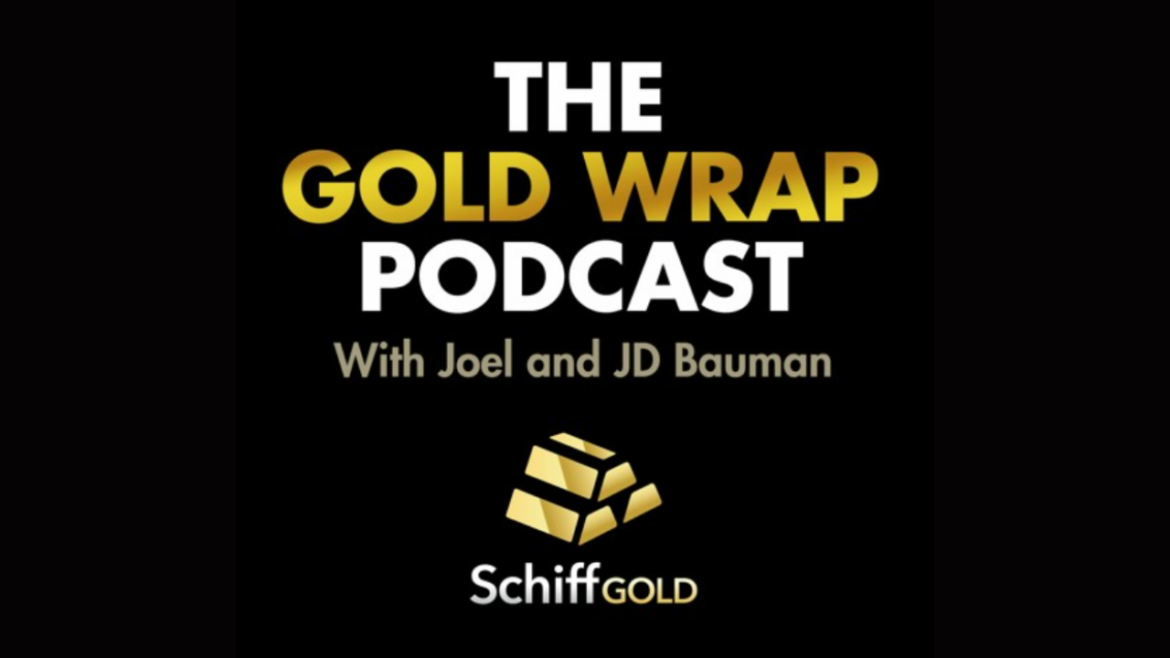Precious metals are apparently waking up. And here is where you can find the best deals.
Site:
Precious metals news
Oil prices edged higher on Monday, supported by rising equity markets and a weaker US dollar. West Texas Intermediate crude hovered around $81 per barrel, recovering from Friday's decline. The softer dollar made dollar-denominated commodities more attractive to investors. Despite recent fluctuations, crude remains on track for a monthly gain, driven by increasing gasoline demand in the US and robust air travel volumes. The market structure indicates tightening supply, while geopolitical risks in the Middle East continue to influence price movements. Analysts remain optimistic about the oil market, expecting a deficit in the third quarter to further tighten the balance.
 Maritime Bottlenecks Resurface, Pushing Freight Rates Towards Covid-Era Peaks
Maritime Bottlenecks Resurface, Pushing Freight Rates Towards Covid-Era PeaksJun 24, 2024 - 13:16:12 EDT
Ocean shipping prices are surging towards pandemic-era highs due to a combination of factors, including vessel diversions around the Red Sea, port congestion, and the approaching peak shipping season. The Houthi rebel attacks in the Red Sea have effectively closed the Suez Canal since late last year, causing disruptions that extend voyage times and strand containers at ports worldwide. This has led to growing ship backups off the coasts of several Asian countries and in European ports. The average global cost of shipping a 40-foot container has more than tripled since last June, reaching $4,119 in mid-June 2024. While not yet at pandemic peak levels, rates from Asia to the U.S. East Coast have doubled from normal levels, causing concern among importers and exporters about potential further increases as demand picks up in the coming months.
Canada's main stock index, the S&P/TSX composite, started the week on a positive note, rising 1.2% on Monday. The increase was primarily driven by gains in materials and utilities stocks, with the energy sector also contributing due to stronger oil prices. Investors are closely watching for upcoming domestic and U.S. inflation data, as well as commentary from Federal Reserve officials. The market's performance reflects anticipation of potential interest rate cuts, with gold prices benefiting from this sentiment as a hedge against the U.S. dollar.
Gold prices edged up on Monday as U.S. Treasury yields eased, with investors focusing on upcoming inflation data that could influence the Federal Reserve's interest rate decisions. Spot gold rose 0.3% to $2,327.58 per ounce, while U.S. gold futures increased 0.4% to $2,340.00. Analysts suggest that if U.S. economic data confirms a soft landing, it could allow the Fed to cut interest rates, potentially supporting gold prices to reach $2,600 per ounce by year-end.
Bank of America analysts predict that gold prices could reach $3,000 per ounce within the next 12-18 months, driven by factors such as increased non-commercial demand, potential Federal Reserve rate cuts, and ongoing central bank purchases. They note that while current market conditions support an average price of $2,200 per ounce, a significant rise in investment demand could push prices higher. Additionally, concerns about the US Treasury market may lead to further diversification into gold by central banks and private investors.
 WHAT GRID SHORTAGES OR BLACKOUTS?? Stunning Surge In Utility-Scale Battery Storage Additions This Year To Save The Day
WHAT GRID SHORTAGES OR BLACKOUTS?? Stunning Surge In Utility-Scale Battery Storage Additions This Year To Save The DayJune 24, 2024
If Americans are worried about more electric grid shortages or blackouts... don't be. The U.S. plans to more than double its utility-scale battery storage this year to save the day... or will it? I was pretty surprised to find out the amount of planned utility-scale battery storage to be added...
The Comex report for last month correctly identified a potential big move in silver while the same report two months ago preceded a massive up move for the price of gold. The data this month is not as obvious or compelling, but it is clear the stress on the Comex continues to build.
 Gold and Governments Move in Right Direction: SchiffGold Friday Gold Wrap June 21 2024
Gold and Governments Move in Right Direction: SchiffGold Friday Gold Wrap June 21 2024June 22, 2024
Gold closed this week slightly down but remains up 12.5% year-to-date. Silver is up 25% year-to-date. This week's political news show governments around the world moving right and central banks adding on more gold.
While demand for Gold as an investment has risen greatly historically, and particularly over the past year, recent technological discoveries provide powerful potential for Gold to increase in prominence as an industrial resource. While gold does provide an excellent and relatively safe store of value, its industrial use could rapidly increase its price and universal desirability. Critics of gold have often commented that its prices may be higher than their “market value” because of human convention and tastes. They have created the idea that the use of gold as an investment is regressive and little more than a callback to a bygone era. Their concerns are increasingly neutralized as gold becomes far more widely used in many crucial industries.
 METALS & BITCOIN UPDATE JUNE 22nd: Even Jeff Christian Is Calling For Higher Metals Prices
METALS & BITCOIN UPDATE JUNE 22nd: Even Jeff Christian Is Calling For Higher Metals PricesJune 22, 2024
The next week is important for the precious metals as it could set the stage for the trend over the next several months. Interestingly, Jeff Christian of CPM Group believes gold and silver could rally briefly until the end of June...
The U.S. abandoned the gold standard in 1933. But ninety-one years later, in the midst of an inflation crisis, investors are flocking back to the original.The U.S. government is set to print about $200 billion in bills in 2024. That’s $548 million for every day. Despite the rampant inflation reducing consumer purchasing power around the country, the Fed continues to exacerbate the existing crisis by flooding the money supply. Following inflation peaks during COVID-19, rates remain high at a projected 2.3% in 2024. With an average savings account interest rate of only .45%, dollarized savings are steadily losing their value. But while the dollar loses its worth, the value of gold is skyrocketing due to a critical distinguishing factor: natural scarcity.
India's gold market saw a 12% year-to-date increase in prices, with demand slowing after the Akshaya Tritiya festival. The gap between domestic and international gold prices narrowed, and the RBI increased its reserves by 30.6 tons, reaching a record 834.2 tons. Gold ETFs saw positive inflows in May, and imports consistently rose. While gold hit an all-time high in mid-May before slightly correcting, it remains one of the best-performing assets. Future demand is expected to focus on the festival season in Q3, with continued interest in bars and coins.
Gold's long-term strength is expected to continue due to its perceived value rather than practical use. Unlike other commodities like oil, gold's price is primarily influenced by supply and perceptions of currency value. Recent global inflation has driven gold prices up, and even as inflation cools and central banks prepare to cut interest rates, gold has seen only minor price declines.
China has resumed buying precious metals, boosting bullish sentiment in the market. The Shanghai Futures Exchange holds significant positions in gold and silver, and Chinese Gold ETFs continue to see inflows. In the West, traders are cautious, waiting for more certainty on Federal Reserve rate cuts. Commodity Trading Advisors are expected to increase their net long position in platinum by 16%, further supporting the bullish trend.
Over the past five years, salaries in most occupations have not kept up with inflation, which has averaged 5.6% annually, the highest since the early 1980s. Despite significant salary reductions across many industries, including a 10.4% drop in sanitation and environmental conservation jobs, housing prices have surged by 56%. Data from the Bureau of Labor Statistics, the Federal Housing Agency, and Redfin show that if these trends continue, purchasing power will continue to erode, impacting future earnings. The accompanying table provides detailed projections for median salaries adjusted for inflation through 2028.
Non-bank financial institutions are increasingly posing risks to America's big banks, as highlighted by economists in a New York Fed blog post. During market stress, non-banks' demand for liquidity from banks can amplify financial shocks, potentially necessitating mass intervention by authorities. With non-banks operating under less stringent regulations, the interconnectedness between banks and non-banks has intensified, with risk correlation rising from 65% pre-2008 to over 80% now. The commercial real estate sector, with significant upcoming mortgage maturities amid rising vacancies and high interest rates, exemplifies this growing risk.
Gold prices are set for a second consecutive weekly gain, driven by optimism over potential U.S. interest-rate cuts following recent weak economic data. Spot gold rose 0.3% to $2,366.83 per ounce, reaching a two-week high, and has gained over 1% this week. U.S. gold futures increased by 0.5% to $2,380.80. Softer economic indicators, including a slowdown in housing and tepid retail sales, have bolstered hopes for a rate cut, reducing the opportunity cost of holding non-yielding bullion. Meanwhile, China's yuan hit a seven-month low, further boosting gold demand.
 Jamie Dimon Warns of U.S. Debt Crisis as Nation Adds $2.1 Trillion in Three Months
Jamie Dimon Warns of U.S. Debt Crisis as Nation Adds $2.1 Trillion in Three MonthsJun 21, 2024 - 09:52:11 EDT
America's escalating public debt has reached $34.7 trillion, and experts like Jamie Dimon and Jerome Powell are alarmed by the rapid increase, with an additional $2.1 trillion added in just three months. The Congressional Budget Office (CBO) reports the deficit will rise from $1.5 trillion this year to $2.6 trillion by 2034, with the debt-to-GDP ratio expected to surge from 99% to 122%. The rise is fueled by recent legislation, including $95 billion in aid to Ukraine, Israel, and Indo-Pacific countries, along with ongoing funding obligations.
 This Recession Indicator With a 45 Year Track Record Just Rolled Over...
This Recession Indicator With a 45 Year Track Record Just Rolled Over...Jun 20, 2024 - 14:38:33 EDT
Dive into the stark realities of current U.S. economic policies with Alan Hibbard in this eye-opening analysis.
A Congressional Budget Office report projects that the U.S. national debt will exceed $56 trillion by 2034, up from just under $35 trillion currently. The growing debt is fueled by higher spending than tax revenues, with a $1.9 trillion deficit expected in 2024. Key contributors to the rising deficit include student loan debt cancellation, aid to Ukraine and Israel, and increased Medicaid costs.







